The Japanese garden (Nihonteien)
.png)
Relaxation, beauty, and philosophy have always been part of a Japanese garden. Koi ponds, majestic trees, and Zen landscapes made of rocks and sand – this is how we envision the art of Japanese gardens. At the same time, aesthetics are not everything here, and not every garden is the same.
Like in a legend
Along with religion, philosophy, and many other aspects of culture, China and Korea have also influenced the art of gardening in Japan. Since the 7th century, there has been a cultivation of Buddhist and Taoist elements, especially in Japanese palace gardens: the harmony of natural landscapes, which have symbolic significance, guiding visitors towards the values of Chinese philosophies or simply encouraging relaxation. Japanese gardens rarely stand alone; they are often part of a temple, shrine, or aristocratic residence. Therefore, the surrounding buildings are also to be understood as part of the garden.

Water features have been the focal point of Japanese gardens from the beginning. Particularly in the earliest form, the Shinden gardens, large ponds with Koi carp, islands, and high bridges were common, where one could even fish and boat. This was also the vision of the Buddhist paradise, which many garden artists oriented themselves towards in the late Heian period (until 1185). Pavilions over the water allowed the enjoyment of poetry or stargazing in a picturesque setting. A gravel area between the garden and surrounding buildings allowed visitors to have an optimal view of the garden and was used for events.
Like the paradise garden, most other Japanese gardens are miniature versions of real or mystical landscapes: ponds imitate lakes or seas from Japanese mythology, wild grasses and tall Ginkgo trees evoke forests. Islands can represent real places or creatures such as turtles or cranes, which hold significant importance in Japanese symbolism. Religious influences can be found here, for example, when sacred mountains like Mount Horai from Taoism are imitated using artificial hills.

Japanese garden art: Every detail counts
If one is familiar with Japanese culture, it is not surprising that each element in the garden holds its own significance. Crucial in Japanese garden art is maintaining the balance between intention and chance, fragility and natural power. The design aims to be simple yet aesthetic, cleverly utilizing space without overwhelming it. The artist places each plant and stone carefully and with a specific purpose.
Mainly evergreen plants are planted, such as bamboo or pine. Form-pruned and wild varieties alternate. However, since seasons hold great importance in Japan, there is always at least one flowering plant visible, representing the changing nature throughout the year: like the winter-blooming plum, red maple leaves in autumn, and cherry trees unfolding their blossoms in spring.
Decorative elements like lanterns, statues, and fences, usually made of stone or bamboo, complete the picture and create boundaries between areas of the Japanese garden. Over time, they become part of it as moss and lichens form on them. Japanese garden artists let them grow, as impermanence is part of the philosophy of Wabi-Sabi, which sees beauty in simplicity, originality, and imperfection.
Fountains can also serve a decorative and practical function. A well-known example is the Sozu, a Japanese fountain with two bamboo spouts. The upper one fills the lower, whose contents, once full, flow into the fountain. Upon rebounding, the bamboo tube produces a characteristic "klonk" sound when it strikes the stone below. In addition to its decorative purpose, this fountain also serves a practical function: it is intended to keep wildlife, especially deer, away from the garden, preventing them from damaging the plants.
Important aspects and elements of a Japanese garden
- The focal point of every Japanese garden is water
- Each element has its own significance
- The balance between chance and intention is crucial
- Simplicity and aesthetics define a Japanese garden
- Every rock and other element is placed with a specific purpose, carefully
- Evergreen plants combined with at least one flowering plant
- Statues, fences, fountains, and lanterns serve decorative purposes and create boundaries
- "Weeds" are allowed to grow – they signify impermanence
- Most importantly: Wabi-Sabi – simplicity, originality, and imperfection = beauty
Zen comes to the gardens
It was only during the Kamakura era (1185 – 1333) that the Japanese garden became smaller, more minimalist, and dominated by rocks and sand. This new form is hence called Karesansui: "dry landscape", better known to us as a Zen garden. This shift came from the military elite who replaced the rule of the imperial court. Since the samurai greatly welcomed the new influence of Zen philosophy from China, they commissioned the construction of many temples with associated innovative gardens. Karesansui gardens probably originated where spring water was not readily available. They were exclusively intended for monks' meditation – hence, they are not meant for walking but for contemplation, preferably from a special meditation room. In contrast to earlier forms of Japanese gardens, of which only paintings remain, many of these Zen gardens are still preserved today and have, therefore, shaped our perception of the Japanese garden.
Nevertheless, there is not just one type of Zen garden. As open as Japan is to beliefs and their practice, the meaning of a Zen garden can be interpreted differently by various observers: Is the arrangement of the stones random or symbolic? Do they depict landscapes or Buddhist values – such as the secular vices from which one should free oneself? It is proven that behind the arrangement of stones in some Zen gardens, complex algorithms enhance the psychological impact of these gardens. An example of this is the Zen garden in the famous Ryoanji Temple in Kyoto.
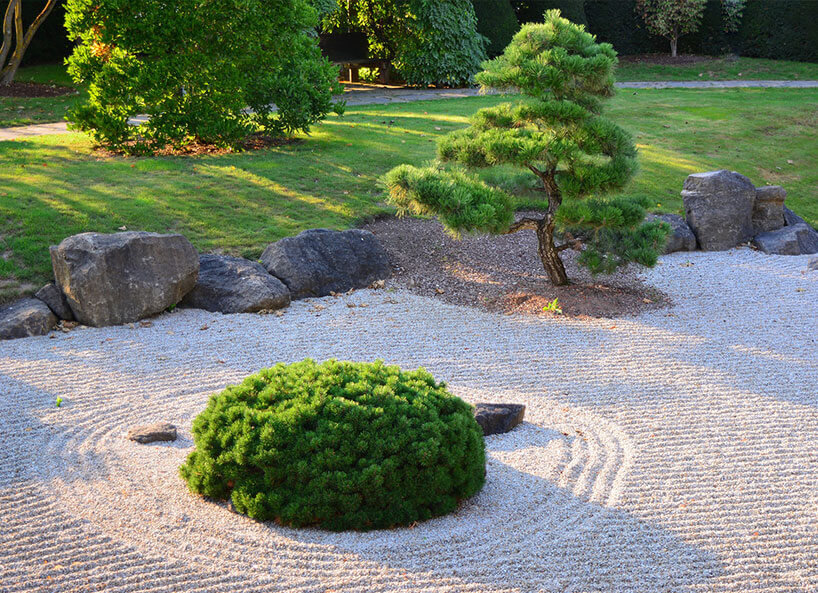
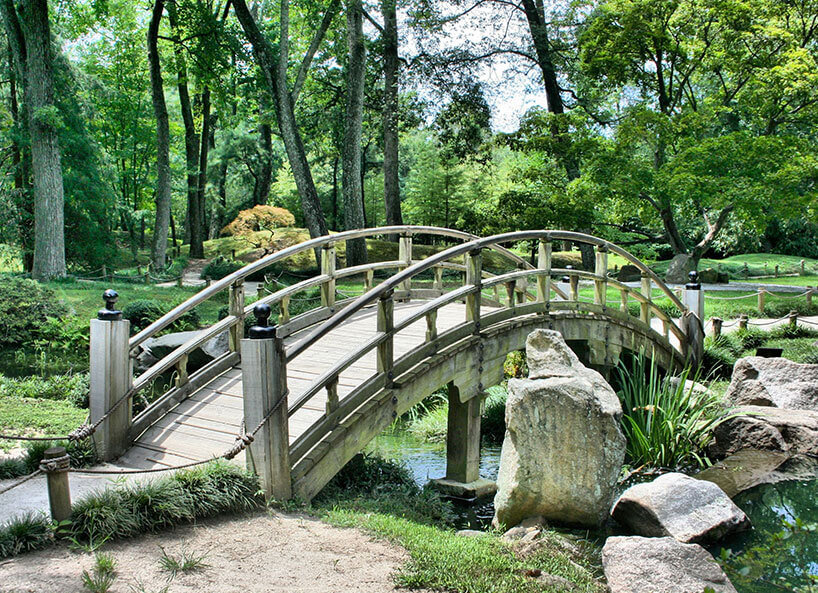
A world of rocks and sand
Not only in Buddhism but also in Shintoism, rocks play a role: Large stones represent deities (Kami), and pebbles mark sacred ground in front of a shrine. These stones from mountains, riverbanks, and seashores serve various functions in Japanese Zen gardens according to their size, shape, and structure, such as stepping stones, waterfalls, or bridges. They also replace other elements: Large rocks, sometimes surrounded by moss, for hills and islands; pebbles and sand for water. They are arranged to look as random and natural as possible – in accordance with the principle of Wabi-Sabi. An odd number is preferred, as it holds positive significance in Zen. Therefore, groups of three stones forming a triangle are often seen: they can be understood, for example, as representations of Buddha and two Bodhisattvas, enlightened Buddhists.
In the sand or fine gravel around the stones, you find carefully raked, characteristic patterns that play around the stones and come to life in the changing light of the day. This raking technique aims to mimic water and its movements: flow lines, waves, and eddies. With its variety of patterns, it requires years of experience in Japanese garden art and rakes made of iron or cypress wood to ensure the representation is deep and enduring. Temple priests typically renew the patterns every seven to ten days.
Through their minimalist yet effective design of Japanese Zen gardens, a relaxed meditation can be achieved to find the Buddha within. In public gardens, this can be challenging when dozens of visitors fill the temple grounds – which is why there are also private gardens in Japan.
Where there is tea, there is also a Japanese garden
One type of these is private miniature versions of Japanese gardens, called Tsuboniwa – two-Tatami-mat gardens. The name indicates their size, which is approximately two Japanese Tatami mats (up to two square meters). These small courtyard gardens serve a different purpose than the Zen garden: Many Japanese people create them at home, and they serve both a decorative and a health-related purpose. They are intended to provide fresh air in the small backyards or between buildings in densely populated Japanese cities.
As the tea ceremony developed in Japan in the 16th century, it also meant a new type of garden: The Tea Garden Chaniwa or Roji, literally "dew-covered ground" or "dew-covered path." The principle of Wabi-Sabi is also found here: asymmetric, natural landscapes with only a few but meaningful elements. This garden has its own function in the tea ceremony: guests wait here for the reception by the tea master and wash their hands before entering the tea house. A special basin (Tsukubai) made of stones and a bamboo spout is provided for this purpose.
Elements of tea gardens are also found in aristocratic stroll gardens that emerged on castle grounds or surrounded noble residences in the Edo period (1603-1867). In this era, there was a return to the original, extensive recreation gardens. A carefully designed path of stone, gravel, or earth leads through the numerous hills, ponds, and islands. The visitor is encouraged to focus their attention on specific elements of the garden.

Japanese garden culture in transition
Even today, various garden landscapes can still be explored. Particularly, different events attract visitors to large Japanese gardens: For example, the Hamarikyu Garden in Tokyo hosts the Grand Tea Ceremony annually, aiming to introduce visitors to the diversity of Japanese culture.
The modern garden, as it is widely seen today, is a blend of stone, sand, and plant landscapes. Meadows and flower beds were elements from Europe and the USA, becoming increasingly popular in Japan since the country's opening during the Meiji era in the 19th century. Therefore, modern Japanese gardens often represent a mix of tradition and Western influence. The landscape, especially the vegetation, in the background outside the actual garden, is often integrated into the garden design. Today, skyscrapers serve as the backdrop for some gardens in Japanese cities, emphasizing the close coexistence of tradition and modernity.
What would a Japanese garden be without Koi carp?

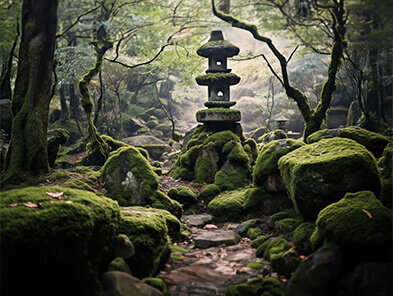
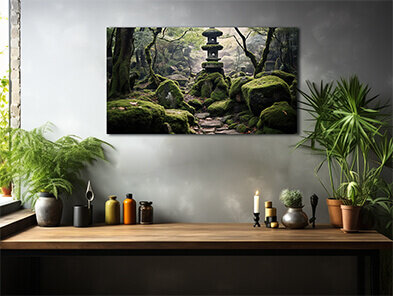
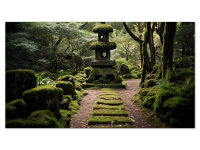
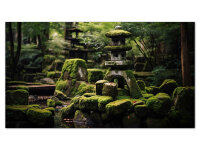
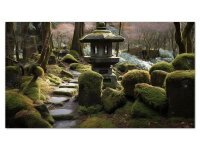
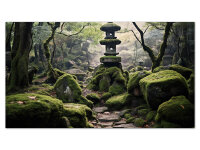










-from-the-yakiyaki-grill-pan.jpg)




